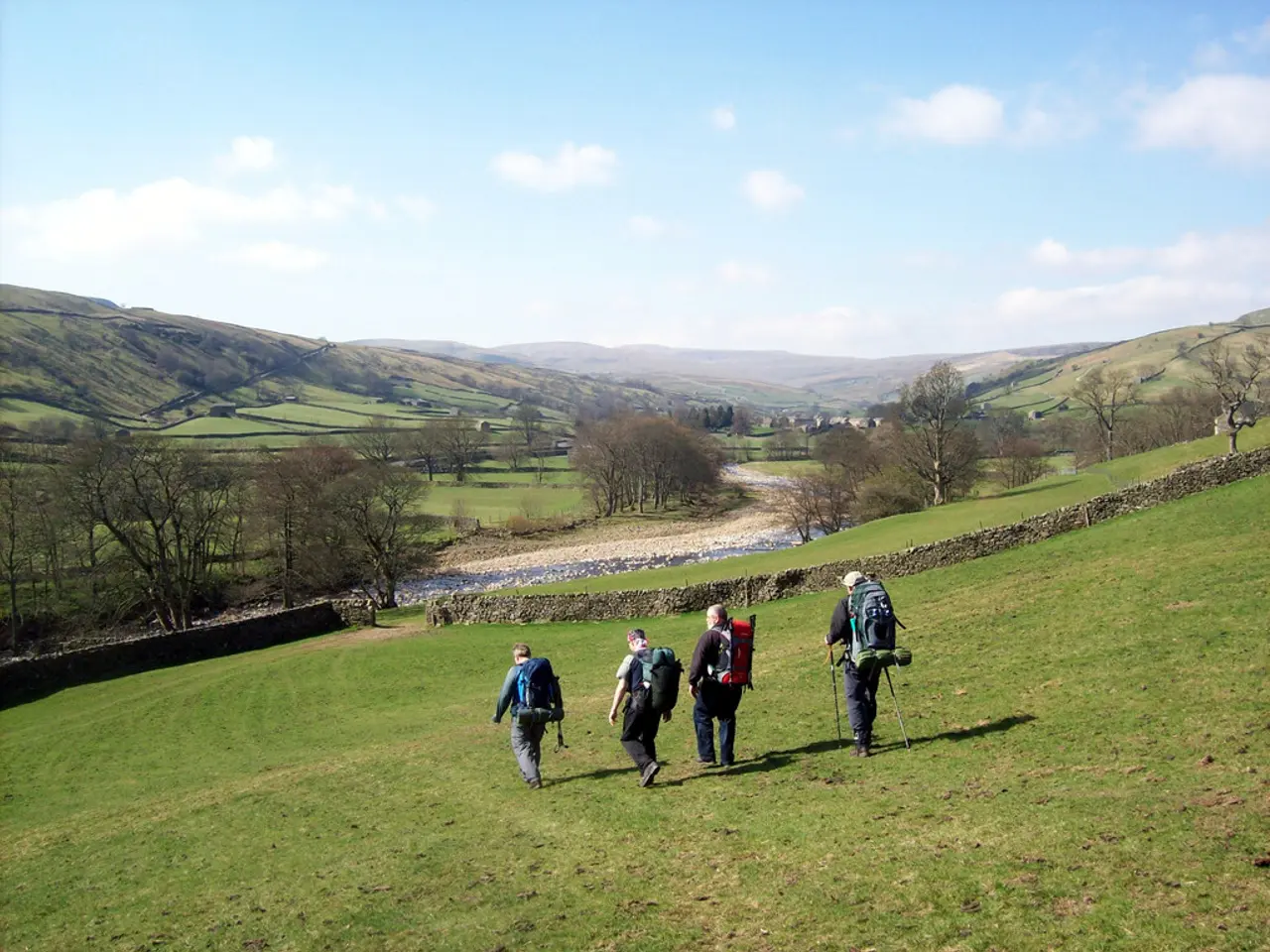Unprepared Americans Brave Wilderness Excursions
Unprepared Hikers Strain Search and Rescue Efforts in the Pacific Northwest
There has been a significant increase in unprepared hikers leading to strained search and rescue (SAR) efforts, especially in areas around Seattle and Skamania County, Washington.
In June 2025, Skamania County experienced a 550% increase in SAR missions compared to previous periods, with similarly sharp increases in May (400%) and ongoing high call volumes through the summer [1][4]. King County and Skamania County SAR teams, which are largely volunteer-based, are stretched thin due to more hikers attempting challenging trails without adequate preparation or knowledge of the terrain and risks [1].
Causes of Increase in Unprepared Hikers
The surge in unprepared hikers is primarily driven by underestimating trail difficulty and overconfidence fueled by social media. Many hikers underestimate trail difficulty, including steep climbs, elevation gain, and technical terrain such as switchbacks and rock fields, especially on popular Instagram-famous hikes like Mailbox Peak, Mount Si, and Snow Lake [1].
The desire to emulate influencer posts encourages novice hikers to attempt dangerous hikes without full awareness of the environmental hazards such as flash floods, altitude sickness, or wildlife encounters [2]. Additionally, people often depend solely on cellphones for light, navigation, and communication, which can fail or be insufficient in backcountry settings [1].
Impact on Search and Rescue Efforts
Strained volunteer SAR teams face high demand, with 27 backcountry missions reported between Memorial Day weekend and July 4 in King County alone [1]. Increased costs and personnel demands lead to calls for fines on reckless hiking behavior, such as a proposed ordinance in Skamania County to impose up to $1,000 fines for "absolutely reckless" decisions on trails to discourage unprepared hiking [1][5].
Solutions and Recommendations to Address the Issue
To address this issue, solutions span education, policy, and community cooperation to promote safer hiking and alleviate SAR burdens [1][2][3][4][5]. Enhanced public education is crucial, emphasizing the importance of realistic self-assessment of skills, thorough planning, and respecting trail conditions and closures. Carrying proper gear and backups is also essential, as one should not rely solely on cellphones for navigation or communication.
Policy measures, such as fines and stricter regulations for unprepared or reckless hikers, can deter dangerous behavior and reduce SAR loads. Community engagement encourages hikers to support SAR by providing accurate location and condition information in emergencies rather than engaging in risky civilian search efforts.
Promotion of guided tours or training can help newer hikers develop safe habits. For example, the Survival University offers classes that teach life-saving techniques and a search and rescue tracking class taught by one of the best trackers in the United States.
In summary, almost 20% of day hike incidents are due to a lack of preparation. By preparing for the unexpected, acquiring practical skills, and practicing regularly, one can enjoy the outdoors safely and responsibly. The largest percentage of rescues are among individuals aged 20-29, with older adventurers aged 60 being the second most common group for rescues.
- Many hikers in the Pacific Northwest are misled by social media, overestimating their abilities and underestimating trail difficulties, contributing to the increase in unprepared hikers.
- The rise in unprepared hikers has led to strained search and rescue (SAR) efforts, particularly in popular hiking spots like Seattle and Skamania County, causing a significant burden on volunteer teams.
- Improper gear selection can exacerbate the challenges faced by unprepared hikers, with some relying solely on cellphones for navigational and communication purposes that may fail in remote areas.
- To combat these issues, public education on self-assessment of skills, planning, and respect for trail conditions is essential in promoting safer hiking and reducing SAR loads.
- Policy measures such as fines and stricter regulations for unprepared or reckless hikers can help deter dangerous behavior and alleviate the pressure on SAR teams.
- Engaging the hiking community in sharing accurate location and condition information during emergencies can reduce unnecessary civilian search efforts and help SAR teams more effectively carry out their missions.
- Guided tours, training, and classes offered by institutions like the Survival University can equip novice hikers with the necessary skills to minimize risks and ensure their outdoor excursions are both enjoyable and safe.
- Preparation, skill acquisition, and regular practice are crucial elements for enjoying the outdoors responsibly, as a lack of preparation remains a leading cause of hiking incidents, particularly among 20-29-year-olds.




